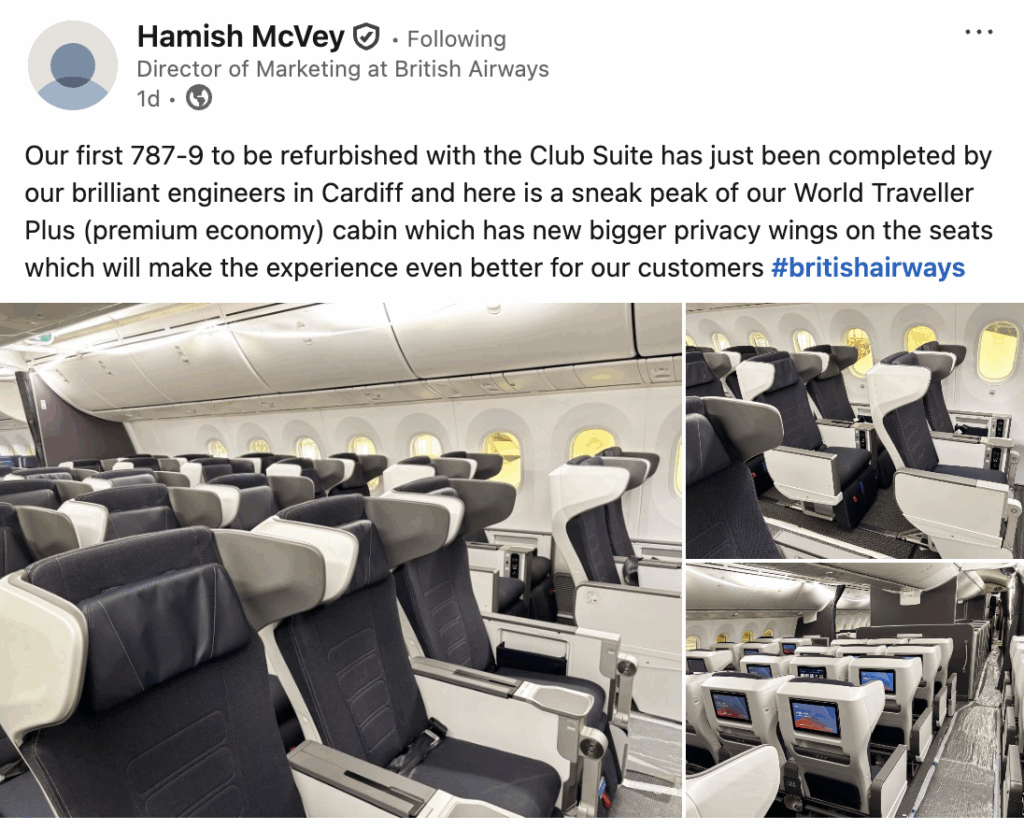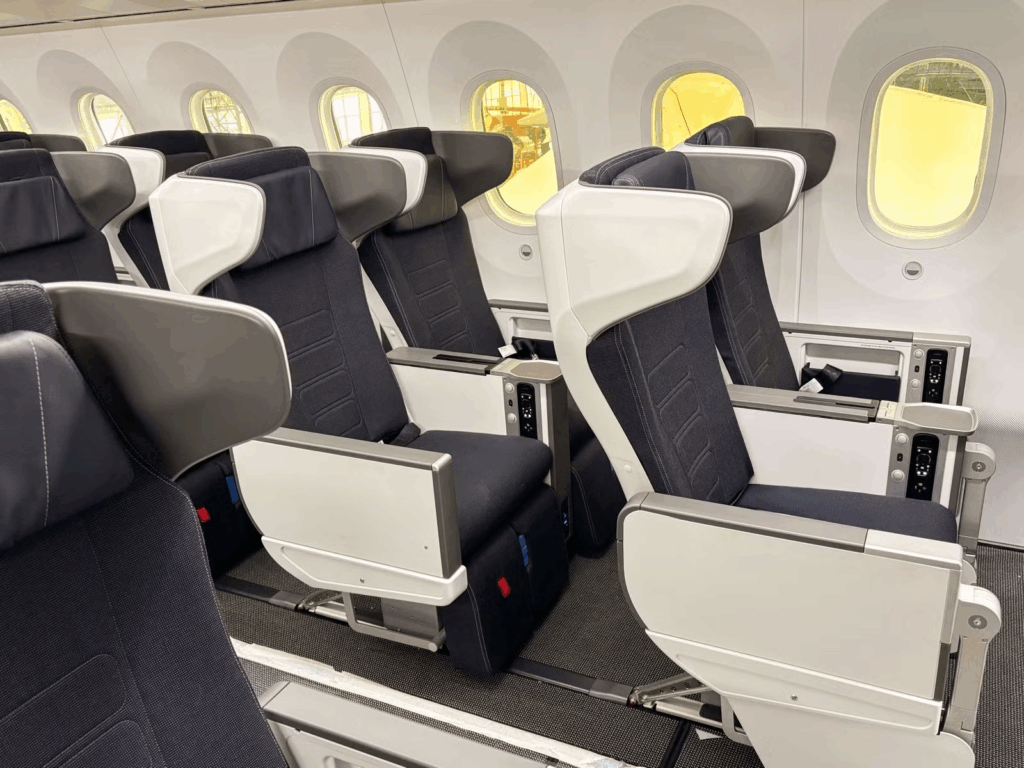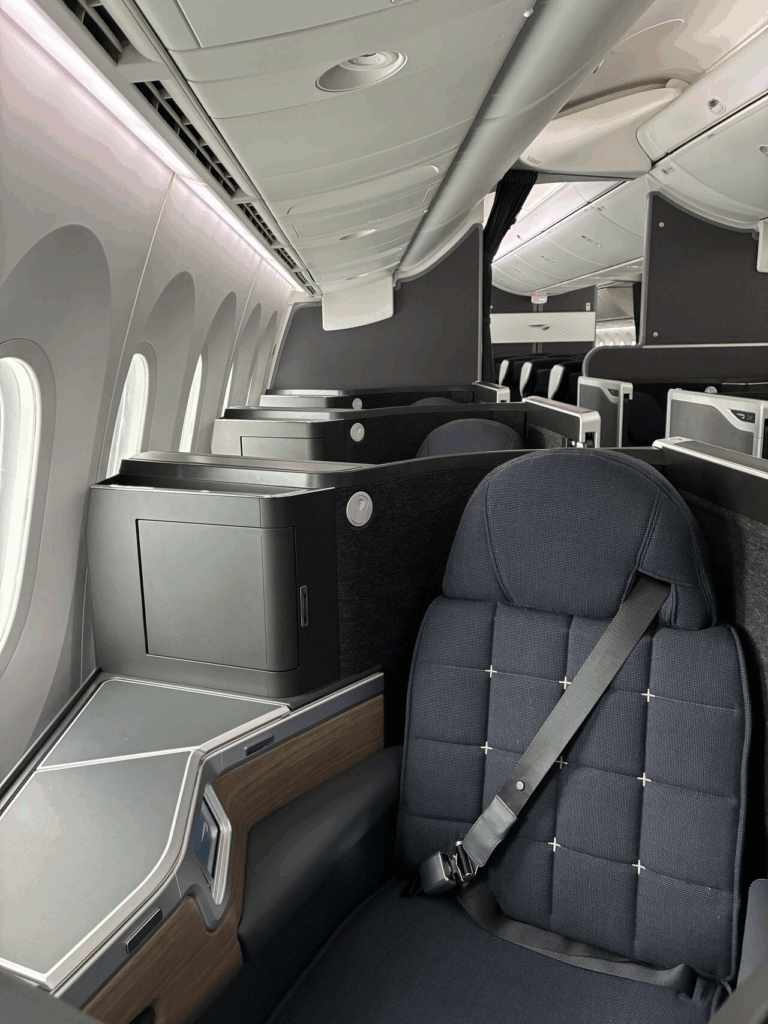It’s not every day that a multi-billion-pound airline launches a new cabin product through a LinkedIn post. Yet that’s exactly what British Airways did last week when two of its senior executives quietly revealed that the first Boeing 787-9 to undergo refurbishment at the airline’s engineering base in Cardiff, Wales has been fitted with an all-new World Traveller Plus (premium economy) seat. No press release, no media event, not even a hint of corporate fanfare – just a few proud photos of new headrests and a caption celebrating “brilliant engineers in Cardiff”.


Within hours, aviation Twitter (or whatever we’re calling it this week) lit up with speculation. Bloggers, frequent flyers and seat-spotters scrambled to dissect every pixel of the photos, trying to identify the seat model and spot any details BA hadn’t mentioned. Because for a carrier in the middle of a £7 billion transformation programme, this quiet debut raised a louder question: why so secretive?
The quiet revolution in South Wales
For years, British Airways has been on a mission to rebuild its long-haul reputation. The rollout of Club Suite, its business-class product, has been front and centre – heavily marketed, filmed, and plastered across the internet. But this time, the airline opted for stealth.

The new Premium Economy seat, seen for the first time aboard a refurbished Boeing 787-9 Dreamliner, features larger privacy wings, a sculpted shell, and a design that looks like either Recaro’s R4 Premium Class seat (PL3810), already chosen by Cathay Pacific, EVA Air, and ANA for their latest cabins. It’s a handsome upgrade with darker navy upholstery, grey plastics, and contrast-stitched black leather headrests – the sort of understated look BA does best.


What’s surprising is that it exists at all. The industry assumed BA’s 787-9 refits would simply reuse the same Premium Economy seat introduced on the A350 in 2019. Instead, BA seems to have taken the opportunity to quietly refine things – perhaps a sign of a broader refresh for the class that sits awkwardly between the glamour of Club Suite and the grind of Economy.
Three Premium Economy seats – one airline
The problem is that British Airways now has three different Premium Economy seats flying under the same “World Traveller Plus” label. On the A380 and some 777s, passengers still find the older, boxy design with limited recline and tiny screens. The A350 and 787-10 brought in a much sleeker Recaro model with legrests and small storage spaces. And now, this Cardiff-born version adds yet another variant – one with winged headrests and more in-seat storage, but apparently a smaller 12- to 13-inch screen.
Consistency has long been BA’s Achilles heel. Passengers booking Premium Economy from Heathrow to, say, Singapore versus Toronto could have completely different experiences, even at the same ticket price. The fact that BA seems to be layering new seat types faster than it can retrofit the old ones doesn’t help.
In fairness, this isn’t unique to BA – Lufthansa and Air France are guilty of the same patchwork product strategy – but it does make life trickier for travellers who care about the details. For a product pitched at those who don’t quite want to splash out on business class but still value predictability and comfort, that inconsistency risks undermining the premium in “premium economy”.
A cautious refresh, not a revolution
Seat-geeks have been quick to identify the new model as Recaro’s R5 Comfort, a solid and respectable premium economy seat – though not the most cutting-edge. The R5 is known for its ergonomic support, leg rest options and configurable privacy wings, but it’s not revolutionary. What it offers is incremental refinement: smarter use of plastics, slightly better storage, and improved head support.

The irony is that BA’s competitors are leaping further. KLM and Air France have launched wider seats with larger 15-inch screens and Bluetooth audio pairing. Virgin Atlantic’s Premium still wins on legroom, style and cabin atmosphere. Against that backdrop, BA’s new seat feels more like a steady evolution than a bold leap. The airline appears to be prioritising reliability and fleet standardisation over wow-factor design – a choice that might please accountants more than Instagram.
So why the secrecy?
It’s possible British Airways simply wanted to avoid over-promising before the certification process is complete. We know European carriers are already learning that lesson: Why 787 Cabin Upgrade Delays Keep Dragging On for BA, Lufthansa, and Virgin Atlantic. The specific BA 787-9 undergoing the refit has been parked in Cardiff since July, and as the first of its type it will take longer to clear both UK and US (FAA) approvals. Once certified, future retrofits should move faster. In that sense, a soft launch makes sense.
Still, it’s curious that a brand once obsessed with polished unveilings is now letting LinkedIn do the talking. Maybe this is the new BA: confident enough to let its engineers speak first and let the product prove itself later. Or perhaps it’s a case of corporate over-caution, wary of headlines that might draw attention to what’s really just an incremental upgrade.
Either way, it worked. The internet noticed. And while this new World Traveller Plus seat won’t set hearts racing, it does show that BA is continuing to invest across all cabins – not just at the front of the plane.
So yes, it’s not the grand reveal some might have expected. But in the end, maybe British Airways doesn’t need a stage to make a statement. Sometimes, all it takes is a few well-timed photos and a LinkedIn caption to remind the world that the quiet revolution is still climbing.
Read British Airways 787 Premium Economy – Our Review of the current seat.





Leave a Reply